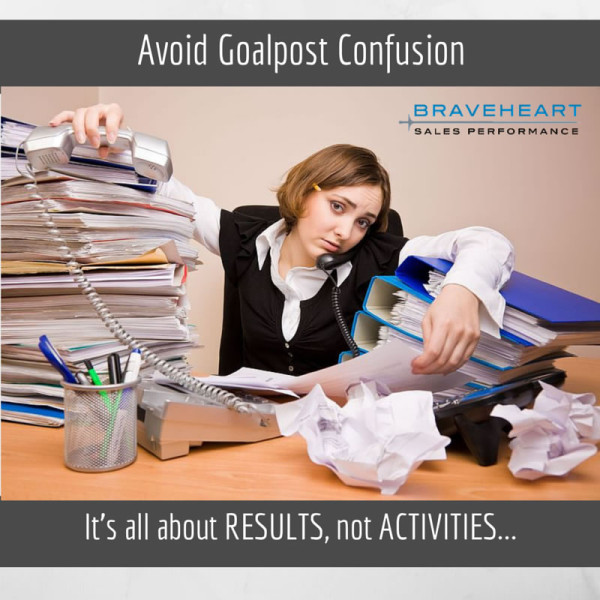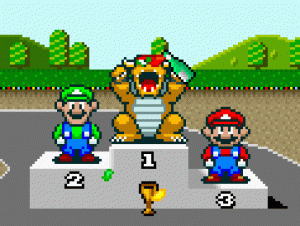By Gretchen Gordon, Published October 11, 2014
I have written a bunch about the need for sales managers to hold their salespeople accountable to certain behaviors. As a matter of fact, it is essential that there be an agreed-upon sales activity plan which the salesperson has agreed to be bound to and which the sales manager has agreed to hold them accountable to. The accountability piece is essential in improving sales effectiveness.
We first have to set the standard of activity. Once the salesperson is doing the appropriate activity level then we can work on the coaching their effectiveness. But – and this is a big but – I do not want any miscommunication about activity. Let there be no doubt about it: results are the scorecard for salespeople. Do not allow salespeople to get sidelined with just doing activity.
I frequently see sales teams where the salespeople have been assigned the task of making so many outbound calls, or a specific number of contacts. Which is fine when it is part of a bigger goal, and we know that a certain number of calls will produce the right outcomes. Unfortunately, I typically see a random activity goal being assigned and then salespeople haphazardly making the calls. They just go through the motions and waste a lot of time and energy.

Salespeople get in ruts and it is easy for them to get lost in the activity and lose focus on results. It’s just like in sports. There might be a player on the team that practices hard, shows up with a great attitude and does all the drills. But when it comes down to execution, he cannot score, or cannot run fast enough to catch the opponent. Results matter, and sometimes activity does not replace results.
So sales managers, it is your job to help salespeople understand the tie between the activity and results. The easiest way to do this is to first help the salesperson understand the requisite sales goals. Then calculate how many first appointments or conversations are necessary in a given time period to produce those results based on historic closing ratios. Clearly you need to understand what those closing ratios are or should be for any salesperson.
If you don’t have specific data then ask the salespeople. The best salespeople probably have a sense of how many first interactions actually turn into business. When using that information to help the rest of the team calculate their requirements, you will probably need to pad the numbers a little bit, allowing for the fact that they may not be as effective as the best on your team. Then it is up to the salesperson to tell you what they are going to do each month, week and potentially day to produce the right number of first appointments.
And, it is your job to check in with them to make sure they are doing it. If they are in fact doing enough of these activities and they are not producing enough in the way of results, then it is time to inspect how well they are doing those activities. Make sure you are going on calls, doing pre-call planning with them, debriefing calls and role playing with them to help them do a better job.
While you should be able to help your salespeople calculate their activity requirements to produce results, it doesn’t just stop there. It is the salesperson’s job to actually produce those results. Just because they are doing the work doesn’t mean that they will execute at an acceptable level. It is a start but activity does not substitute for results. Sales managers: Hold your salespeople accountable to the right activities first, which are those that you have helped them calculate based on their goals. Then, be sure to dig in and coach them up to make sure they execute well.
Business Articles | Business 2 Community
(404)
Report Post



